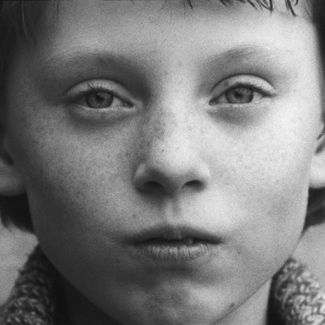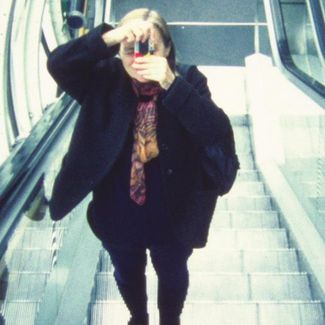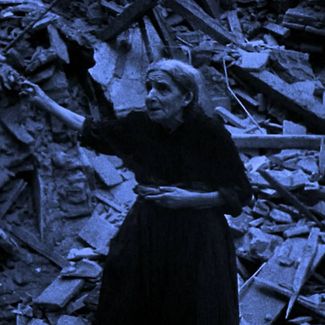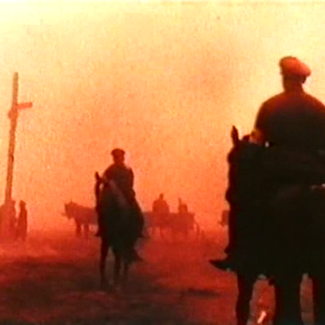Prize winner 2025
Béla Tarr, Yervant Gianikian and Angela Ricci Lucchi
Motivation
In the year when the European Capital of Culture doubles for the first time, as in the unique cross-border conurbation of Nova Gorica and Gorizia, we have decided to double the Darko Bratina Award, closely linked to this dual culture, wedged between East and West. That is why we are awarding the prize to two filmmakers from two different worlds: one from the East, Béla Tarr, a magnificent Hungarian filmmaker who knew how to tell the story of the curse and resilience of a world that has collapsed, and the other – actually two, since they are a couple – from the West (although one of them comes from Armenia), Yervant Gianikian and Angela Ricci-Lucchi, who in fifty years created a kind of cinema like no other. They started from images found in the world that did not belong to them, but to all of us, and they wove the memory of the human world (for example, their films created from footage shot by Luca Comerio during the First World Wa). They have traveled the world with their films and shown that film is created along paths of freedom, dialogue, and poetry, and through the independence of unconventional, demanding, and dynamic choices.
Both award winners have paved the way for a different view of film with their creative work, which transcends the borders of countries and languages. Their visions have opened up the space for thinking about history, society and art and teach us that film is a place where cultures, memories and human destinies meet.
Biography
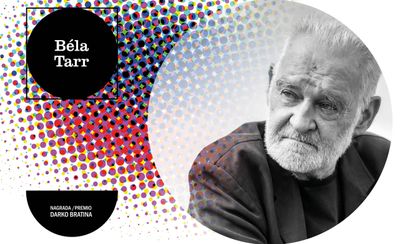 Béla Tarr
Béla Tarr
Béla Tarr comes from Hungary (both the setting and political subject of almost all his films), where at the age of twenty-four he made his first feature film Family Nest (Családi tűzfészek, 1979), shot with a handheld camera and full of rage, supported by the Béla Balázs Studio. From the early Cinemarxism (title of his 1979 short) to Damnation (Kárhozat, 1988), over the years the camera became less nervous, the anger grew deeper, colours thickened into the black and white that marked all his later films, narration became more rarefied, cinema stripped down to the essential.
At the 1994 Berlinale he presented the film that made him famous on the international festival circuit, winning among other awards the Silver Bear – Sátántangó, a seven hours and twenty minutes long endeavour, shot on the Hungarian plain (though it looks more like a swamp). Although narration itself was not his interest, what he wove through a prodigious rhythmic work has the depth, breadth, and scope of John Ford’s cinema or Melville’s literature, even if in his case speaking of references is hardly appropriate: while his cinema may recall the movements of Andrei Tarkovsky or Miklós Jancsó, at the same time it forges a path entirely its own, where the political dimension (in a Rossellinian sense, that is, in relation to humanism) carries considerable weight. One need only think of his Prologue, his short film from the Visions of Europe (2004) anthology, or of Werckmeister Harmonies (Werckmeister harmóniák, 2000), just to mention the two most direct examples.
His last film, The Turin Horse, made in 2011, truly is his last film, as it was even shot with the awareness that it would be his last (on film stock, in that format which for over a century had been the ground on which “cinema” moved). He kept his word, limiting himself a few years later to preparing an installation in Vienna, and over the years dedicating himself to his film.factory in Sarajevo, the film school where he proposed an unorthodox education to a new generation of filmmakers (whom he later also produced).
Among the filmmakers of his generation he remains one of the most withdrawn and at the same time one of the most celebrated within auteur cinema – a category that feels too narrow for him, but which in many respects he embodies like few others.
Films
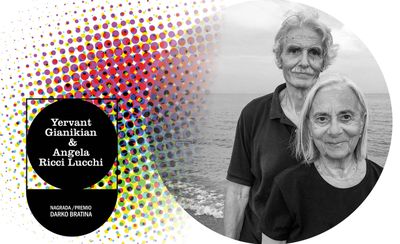
Yervant Gianikian and Angela Ricci Lucchi
A couple at work and in life – he’s an architect of Armenian origin, she’s an Italian painter – YervantGianikian and Angela Ricci Lucchi are two visual artists who have worked for over four decades,using film as a launch pad for an all-embracing reflection on the use of images and on their intrinsic ambivalence. Their encounter has generated a high output which, in the second half ofthe Seventies, took them to the major festivals in Italy, London and the US, participating with their“scented films”, works midway between performance and environmental art which involveddiffusing perfumes and other smells under the direction of the artists. From the late Seventies thetwo artists embarked on research which led them to discover films recovered from the archives ofgreat filmmaker of the past, such as for example Luca Comerio (1878-1940), film pioneer and firstMilanese film producer, or those found during adventurous travels in countries that were thescene of major social and political conflicts and hostilities during the past century such as theformer Yugoslavia, Armenia, Africa and India. Gianikian and Ricci Lucchi salvaged these preciousaccounts and produced art projects out of them which overturned the hierarchy of the images,narrating the dark and lesser-known side of history. They invented a device, the “analyticalcamera”, to re-project manually the re-photographed, colour-tinted and re-edited frames of theold films, using an artisanal technique harking back to the early years of cinema. The result is newnarrations which reveal the hidden meaning of the images and the mechanisms whereby anapparently objective genre such as the documentary brings with it large areas of ambiguity whichthe artists’ vision succeeds in bringing to light. Through their capacity for reinterpretation YervantGianikian and Angela Ricci Lucchi tackle the major themes of the history of the 20th and 21stcenturies – colonial violence, the great wars, exile, migrations of peoples – as told through theeyes of the defeated, the nameless multitudes who in official reports remain in the backgroundduring major events. They are brought to the foreground and become a symbolic testimony of thehuman condition as seen in the more universal and choral sense. (Andrea Lissoni)
Angela passed away February 2018.
Masterclass with Yerbant Gianikian
Yervant Gianikian and Angela Ricci Lucchi were an artistic and filmmaking duo who explored, through archival images, the meaning of a present capable of questioning its own history and imagining the possibility of liberation. Gianikian will guide us into a unique method of inquiry—one that cinema, in rare cases, allows like no other discipline.
An architect of Armenian origin, Gianikian is among the most remarkable explorers of cinematic memory. Together with Ricci Lucchi, he spent more than half a century unveiling the hidden layers of film archives and exposing the dark sediments of history—colonialism, wars, exiles, forgotten crowds. With their “analytical camera,” the duo transformed fragile reels into meditations on pain and humanity, where anonymous faces emerge as voices of a universal memory.
On Saturday, 11. October 2025, at 4 PM to 17.30 PM at Palazzo del Cinema - Hiša filma, (Kinemax), Gorizia will take place a conversation in English with the author – a unique opportunity to meet a master of cinematic thought. That same evening, at 6:00 PM, the film I diari di Angela - Noi due cineasti. Capitolo terzo will be screened.
Kinoatelje’s bond with Gianikian & Ricci Lucchi runs deep: from the reconstruction of La sentinella della patria using fragments preserved in our Fondo Simonelli, to their Italian premiere of the restored Profumati at Film Forum 2016 in Gorizia, their work has long been intertwined with our archive, our city, and our history.
Applications for the masterclass here.

